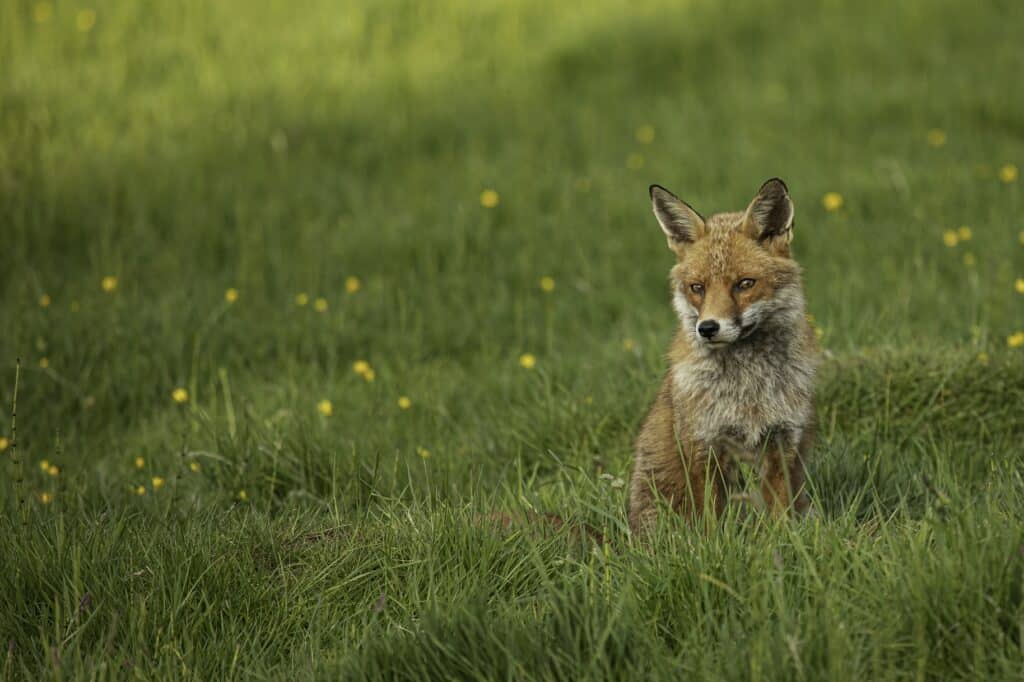On 9 May, the Telegraph reported on a letter that claimed foxes are facing a “catastrophic decline”. The cause, the letter claimed, is the hunting ban. The claim is unsurprisingly questionable given where it came from.
As outlined in the Canary, the letter was made available exclusively to the Telegraph, and it named only one signatory of an alleged 103: pro-hunt vet Louisa Cheape. As the Canary article explained, this is straightforward hunting propaganda from the struggling industry’s media mouthpiece.
The letter’s claims rest on the idea that the Hunting Act has led land managers to shooting foxes since they are no longer hunted. As a result of improved technology and a less discriminate approach, shooting is destroying foxes at a much higher rate than hunting ever did. As a result, the UK’s fox population has declined.
Straight off the bat, the most glaringly obvious problem with this claim is that it’s throwing one form of animal abuse under the bus in order to support another one. It’s a pretty weak attempt at using animal welfare concerns. But such feeble excuses are hardly a surprise when the hunting industry has almost no legitimate foundation left on which to stand.
The other immediate problem with the claim is that hunting was never a form of pest control. Throughout its centuries long history, the activity has depended on artificial earths and bagged foxes to control the available of foxes for hunting. As previously explained on Protect the Wild, artificially released foxes were so prevalent in hunting during the 18th Century that an entire trade developed around them in London’s Leadenhall Market. And recent events, including a fox that sabs found “buried alive” by the Cotswold Hunt, show these are still common practices today.
Is there even a decline in the fox population?
In terms of an absolute figure, the Mammal Society estimated in 2018 that there were approximately 357,000 foxes across Britain.
However, latest figures from the British Trust for Ornithology (BTO) showed that this number has likely declined by 46% between 1995 and 2021. That number comes from the BTO’s Bird Breeding Survey 2021 (BBS) report, the latest iteration of an annual census conducted by birdwatching volunteers. BTO also said this correlated with figures gathered from ‘game bags’ (animals killed by shooters) recorded by the Game and Wildlife Conservation Trust (GWCT).
Why this is the case is unclear. The ramped up aggression of land managers is cited as one possible cause. But as a 2018 overview of figures by the Vincent Wildlife Trust, the fall in fox numbers “is coincident with significant declines in BBS records of rabbits” across Britain. Rabbits are, of course, one of a fox’s primary food sources. The RSPCA suggested that mange has had a significant impact on numbers.
Beyond the BTO and GWCT’s figures, there’s few if any longitudinal figures for foxes nationwide.
Death by a thousand cuts
Cheape, her fellow signatories, and the Telegraph aren’t beating a new drum. The ‘hunting good, shooting bad’ propaganda was evident during the drafting of the Hunting Act. During a Hunting Bill debate in September 2004, Tory MP James Gray said:
“Shooting is an unselective method of killing foxes; fox hunting using dogs is selective. I appreciate that it is a debatable point, but, in our view, shooting, snaring, gassing or poisoning are much crueller methods than a simple killing using dogs.”
Of course, this is using the most superficial of animal welfare concerns. It places the total number of a species above anything related to the lived experiences of either an individual fox or the species as a whole. It talks about cruelty, but that word is almost meaningless given that both hunting and shooting inflict different but equally vile horrors onto foxes.
Moreover, the question arises: why kill foxes in such a systematic way at all? Few if any of the creatures present an existential threat to humans. The entire argument is framed by an economic drive to sell more farmed animals.
Hunting is attempting to leech off this to claw back some sort of credibility. But not from the general public, obviously. The argument is convincing nobody that’s already against hunting. It’s an attempt to shore-up the industry’s rapidly dwindling support base. A long (and ongoing) series of blows that began with the Hunt Saboteurs Association’s exposé of the Hunting Office’s damning webinars has damaged hunting’s image almost beyond recovery. The letter and the Telegraph’s reporting on it are trying to bandage that. But nobody’s falling for it now.

